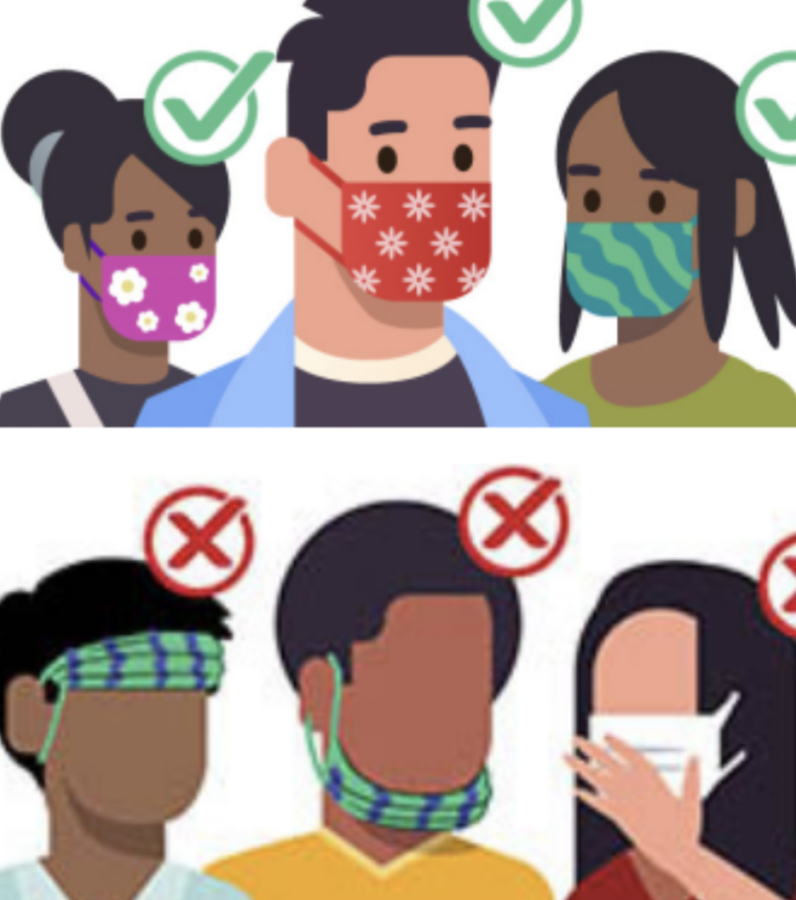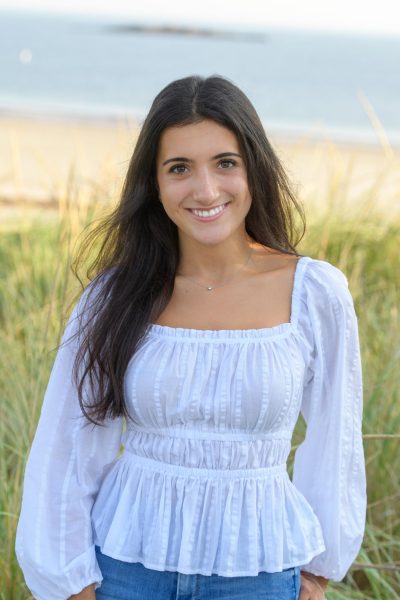Faculty making list, checking it twice
School tracks students repeatedly not wearing masks
December 6, 2021
The holiday season is commonly known as the season of giving. This year, however, there’s one present no one wants to give: COVID-19.
At the start of the academic year, the school had imagined the community could be maskless in school by October 11—a hope halted by breakthrough cases and variants. In an email sent out to parents on November 29, Head of School Jennifer Price announced students and faculty would be required to wear masks indoors to keep the community safe until the school reassesses mask-wearing after winter break.
Despite the mask protocol, faculty members have had to frequently remind students to wear their masks properly, Upper School (US) Math and Computer Science Teacher Christine Oulton said.
“Last year, the students had so little time that they weren’t with an adult that they seemed better at wearing their masks because they were always being watched,” she said. “Now, students have much more freedom. We’ve opened up a lot of time for them and a lot of spaces where they are not supervised anymore. There are students that don’t always do the safest thing when they’re not being supervised.”
In hopes of enforcing the mask protocol and discovering which students are repeatedly disobeying the rule, on November 4 the school electronically posted a “mask list” for faculty. On the “mask list,” an online spreadsheet, teachers can write down the names of students with whom they’ve had to have multiple conversations about mask-wearing.
By documenting these conversations, faculty can understand which students are being spoken to most often and whether their incorrect mask-wearing is a repeated action or just an occasional mistake, Ms. Oulton said.
The “mask list” uses the word “conversation” instead of “reminder” to facilitate an environment of understanding rather than just reprimanding. “We don’t get anywhere by just reminders, reminders, reminders, or a quick scolding or quick pointing out,” Ms. Oulton said. “When I add a student to the mask list, that indicates I’ve stopped and had a conversation with this student about what they’re doing wrong either intentionally or unintentionally.”
If a student appears on the “mask list” multiple times, their adviser will call the student’s guardians and have a conversation with them. If after that point the student continues to not wear their mask properly, US Director Geoff Theobald said, the student would likely be sent home from school—a disciplinary action Mr. Theobald said he’s confident the school won’t have to take.
US English Teacher Beth McNamara hopes the “mask list” will bring the focus back to the most important part of school, she said.
“I am excited to be a teacher, and I look forward to class, and I care about kids in that way,” she said. “I am willing to spend time on masks because it’s important, but that is so not why I’m here. It’s become such a huge portion of what I do that it’s frustrating, and I’m not alone in that.”
US Science Teacher Jenn Gatti said the issue also impacts community members outside school walls.
“There are so many teachers and staff who have little kids at home who are under five, and we don’t have the option of vaccinating our children,” Dr. Gatti, who has a two-year-old daughter, said. “Even though the risk of transmission is lower since I am vaccinated, I want to do anything and everything I can to minimize the risk of bringing something home to my daughter while at the same time being able to do my job because I love what I do.”
Although students do not have access to the “mask list,” US Administrative Assistant to the Dean of Students Kerri Anne Shea said, students were approaching her within two hours after the list was published.
“Some kids came into my office asking if they were on the list or not and venting about having to wear masks and their frustrations regarding the masks,” she said. “I was surprised at how fast they found out about the ‘mask list.’”
Saanika Raina ’23, who heard about the “mask list” from a fellow student, said the “mask list” is “reasonable” but wishes there were more transparency as to what the list entails.
“If the school is going to take disciplinary action over something, the kids deserve to know,” she said. “I’m sure that that would stop a lot of people from repeatedly not wearing their masks.”
Alexandra Kluzak ’24 said she appreciates the goal of the “mask list.”
“Many students, myself included, have grown tired of COVID-era restrictions and mask-wearing in particular,” she said. “Hopefully, by holding us accountable, the ‘mask list’ will ensure that we do not let our guards down in the final months of the pandemic.”
Mr. Theobald said the “mask list” will send a “miserable message” to students if it’s interpreted as a call to hide from adults and hopes the list inspires an effort from the whole community.
“We’re all in this together, and I worry about a system that’s relying solely on adults being able to see students,” he said. “I’m hopeful the ‘mask list’ will become something where anybody is able to hold anyone accountable.”


